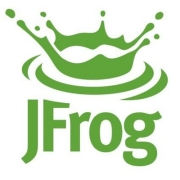DevSecOps integrates security practices within the DevOps process, ensuring quicker and safer software delivery by embedding security directly throughout the development cycle.
DevSecOps promotes a culture where security becomes a shared responsibility across the development, operations, and security teams. This integration reduces vulnerabilities early in the development lifecycle and improves the overall quality of software by automating security workflows. Continuous monitoring and real-time feedback loops enable swift response to potential threats without slowing down delivery timelines. Engineering teams collaborate efficiently, balancing speed with security.
What are key features to consider in DevSecOps?In the financial industry, implementing DevSecOps allows for rapid deployment of updates while addressing stringent regulatory requirements. In the healthcare sector, it enhances patient data security and application integrity. E-commerce companies leverage DevSecOps to protect customer data and ensure transaction security.
DevSecOps is beneficial for organizations by fostering a security-first mindset that aligns with development and operational goals, enabling faster software delivery with reduced risks and improved compliance.
| Product | Market Share (%) |
|---|---|
| Snyk | 22.9% |
| Checkmarx One | 14.9% |
| GitLab | 11.6% |
| Other | 50.6% |






























DevSecOps integrates security into every phase of the CI/CD pipeline by embedding security checks and scans directly into the development process. This approach ensures that security vulnerabilities are identified and remediated early, reducing risks and costs. You can automate security testing with tools designed for continuous integration environments, allowing teams to detect issues early and apply patches before deployment. By collaborating across teams, DevSecOps fosters a culture of shared responsibility towards application security, leading to more secure software delivery.
What are the benefits of automated security testing in DevSecOps?Automated security testing in DevSecOps reduces manual effort and saves time by automatically identifying vulnerabilities and compliance issues. You benefit from faster feedback loops, allowing developers to resolve security issues rapidly. Automation scales more efficiently than manual processes and is less error-prone, supporting consistent security standards across deployments. Overall, automated testing facilitates continuous security, ensuring that your applications remain secure over time without slowing down the development pace.
How can you implement threat modeling in DevSecOps?To implement threat modeling in DevSecOps, start by integrating threat analysis at the early stages of the development process. Identify potential threats and vulnerabilities during the design phase to understand where security needs to be prioritized. You can use threat modeling tools that fit into your existing DevSecOps practices, enabling continuous monitoring and analysis. Regularly update threat models to address emerging threats and engage your entire team in discussions on potential risks, encouraging proactive security measures throughout the software lifecycle.
What role do containers play in DevSecOps?Containers play a significant role in DevSecOps by providing a consistent and isolated environment for application deployment. This consistency eliminates the "it works on my machine" problem, enhancing reliability across environments. You can leverage containers to package applications with all their dependencies, ensuring predictable behavior across production and testing environments. Containers also streamline the integration of security practices, as security patches can be quickly applied and distributed with minimal disruption, enhancing the security posture of your development process.
How do you address compliance in a DevSecOps framework?Addressing compliance in a DevSecOps framework involves embedding compliance checks into your CI/CD workflows. Use automated tools to continually check code against regulatory standards and implement security policies as part of code deployment. You also need to regularly audit your security practices and document compliance measures to ensure alignment with industry standards. By keeping compliance integral to your development process, you not only meet legal and regulatory requirements but also enhance the overall security and trustworthiness of your applications.